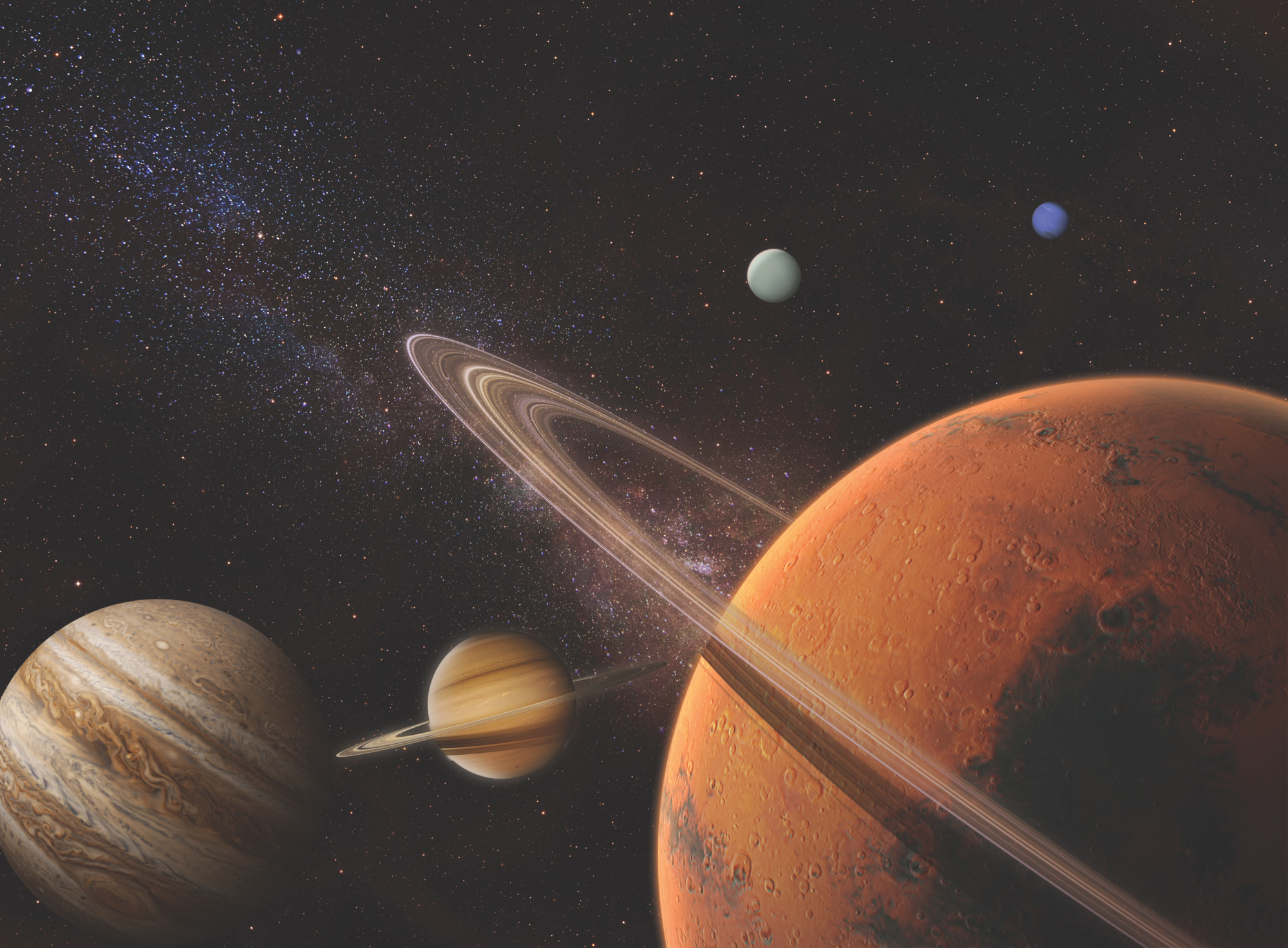The Secrets Of The Martian Moons – The Cyclic Moon Theory

More than 200 moons are populating our Solar System, and the satellite of Mars is one of the smallest, only seven miles in diameter.
Mars’ Moons
Two moons orbit around Mars – Deimos, and Phobos. Both seem to be composed of the same material that makes up asteroids.
Fun Fact – The composition of the two moons made scientists from 1977 believe that they are asteroids that got hijacked by Mars’ gravitational pull.
Deimos, the smaller of the two, is probably one of the least impressive moons in our Solar System. It orbits Mars every 30 hours.
It also has an interesting shape because of its uneven surface. It got its name after the Roman god of dread, so it’s doesn’t necessarily sound peaceful.
Still, the moon might hide secrets about the past of the red planet and could reflect how it looked billions of years ago.
A recent study based on Deimos’ peculiar orbital tilt suggests that a prominent ring might have surrounded the red planet for most of its history.
About The Study
The research was introduced at the 236th Meeting of the American Astronomical Society, which was held remotely on June 1-3.
The study was accepted for publication in the Astrophysical Journal Letters.
Matija Ćuk, a researcher at the SETI Institute, presented interest in finding out about the past of the two moons.
Ćuk said that the orbital tilt of Deimos hides a big secret.
The Cyclic Moon Theory
The idea of such a theory was introduced in 2017 by a co-author of the study, David Minton, a professor of planetary science from the Purdue University. He proposed that, over the billions of years since Mars formed, a set of moons had been ripped by gravity and formed a ring around it, from which new moons formed.
The researchers discovered that the orbit of Phobos was getting increasingly closer to Mars’, and it would soon intersect its gravitational pull. However, Deimos is the younger of the two.
After it was born, it moved away, outward of Mars’ orbit. The only possible reason its orbit is tilted is that it was pushed away by the ring.
The researchers behind the study elaborated on a theory that speaks of a “grandparent” moon, approximately 20 times larger than Phobos, that existed nearly three billion years ago.
That “ancient moon” ended up torn apart by Mars’ gravity. That event was followed by two other ring-moon cycles.
After that happened, Phobos ended up similarly by forming a ring in its aftermath.
Ćuk asked a genius question – “What happens when there’s both a ring and a moon?”
The answer quickly followed: “Angle momentum, the amount of orbital energy goes from the ring to the moon. The orbit of the moon gets larger, while the orbit of the ring gets smaller.”
At some point, the ring gets close enough to Mars, and particles end up falling on the planet.
Researchers are looking forward to analyzing that theoretical model furthermore, primarily because of the Japanese space agency’s (JAXA) mission to Phobos, planned for 2024.
The mission’s goal is to collect a sample from the moon and bringing it back to Earth.
0 comments